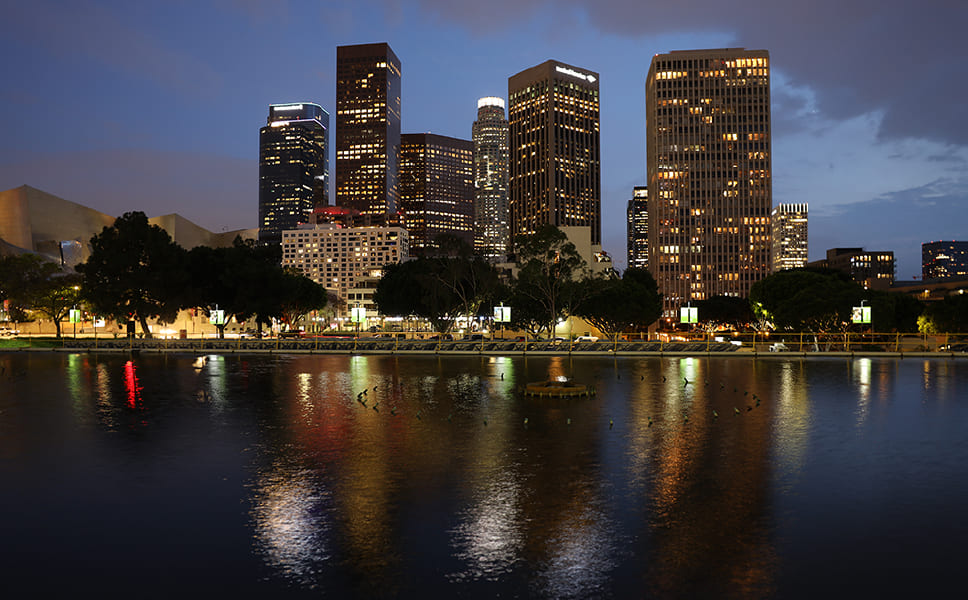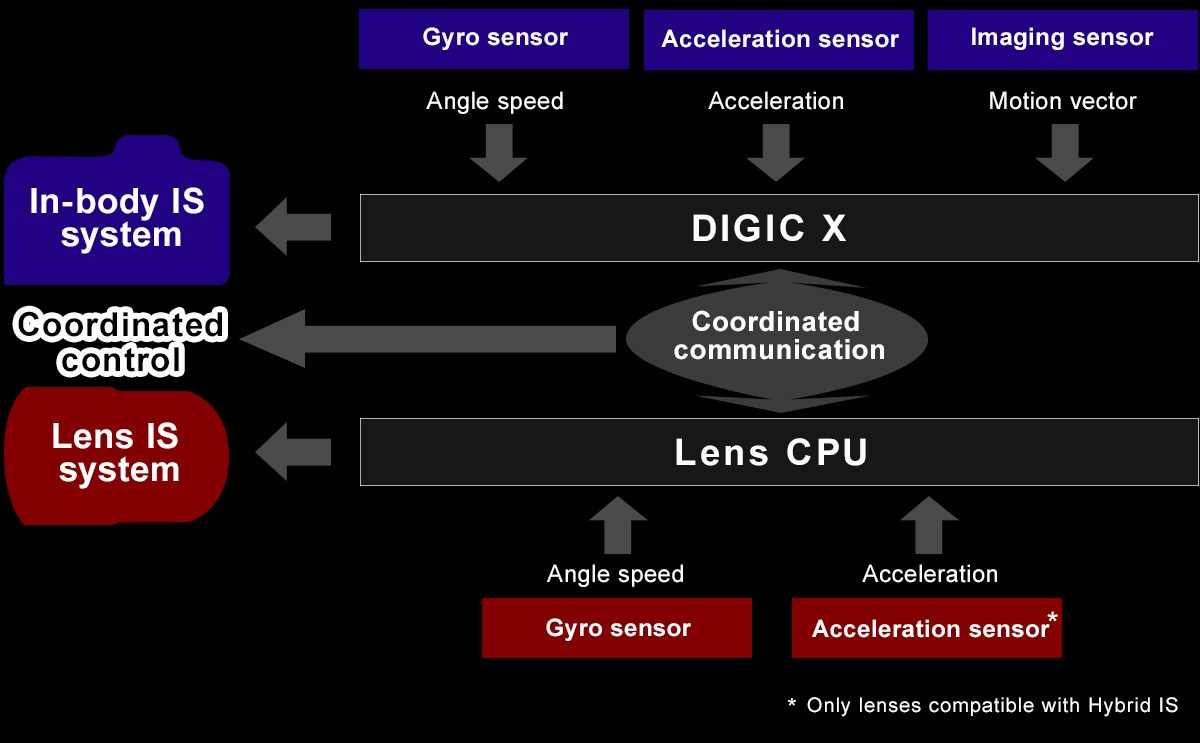Camera-shake blur compensation
(image stabilization)
Causes of camera-shake blur
When taking hand-held photos, even professionals often face the problem of camera-shake blur. This problem becomes even more pronounced when shooting at slow shutter speeds, using super-telephoto lenses, or taking close-up (macro) photos. Although a tripod can be used to prevent camera shake, sometimes it is not possible to set up a tripod or there is no time to do so. In such situations, image stabilization (IS) is a very effective feature.


Camera-shake blur compensation ONCamera-shake blur compensation OFF
Types of camera-shake blur
Photographers identify three types of camera shake. Angular shake occurs when the camera lens wobbles up and down, like a person nodding their head, or side to side, like a person shaking their head. Shift shake occurs when the camera moves parallel to the subject in either the vertical or horizontal direction. Finally, roll shake occurs when the camera is rotated around the center of the lens, like the steering wheel of a car. For example, roll shake often occurs when the shutter button is pressed, causing the camera to rotate slightly in one direction.

Effects of image stabilization (IS)
In addition to in-lens optical IS, which is a feature of many interchangeable lenses, Canon EOS R series cameras feature in-body IS, which uses compensation on the image sensor side to effectively suppresses camera-shake blur, as well as coordinated control IS, which combines the two features for more advanced IS results.
Along with these IS systems, EOS R series cameras can also use the movie digital IS feature when shooting movies. A five-axis image stabilization system (horizontal rotation axis, vertical rotation axis, rotation axis, left/right, and up/down) allows the photographer to shoot in unstable positions, while walking, or other situations where camera-shake blur is likely to occur.








